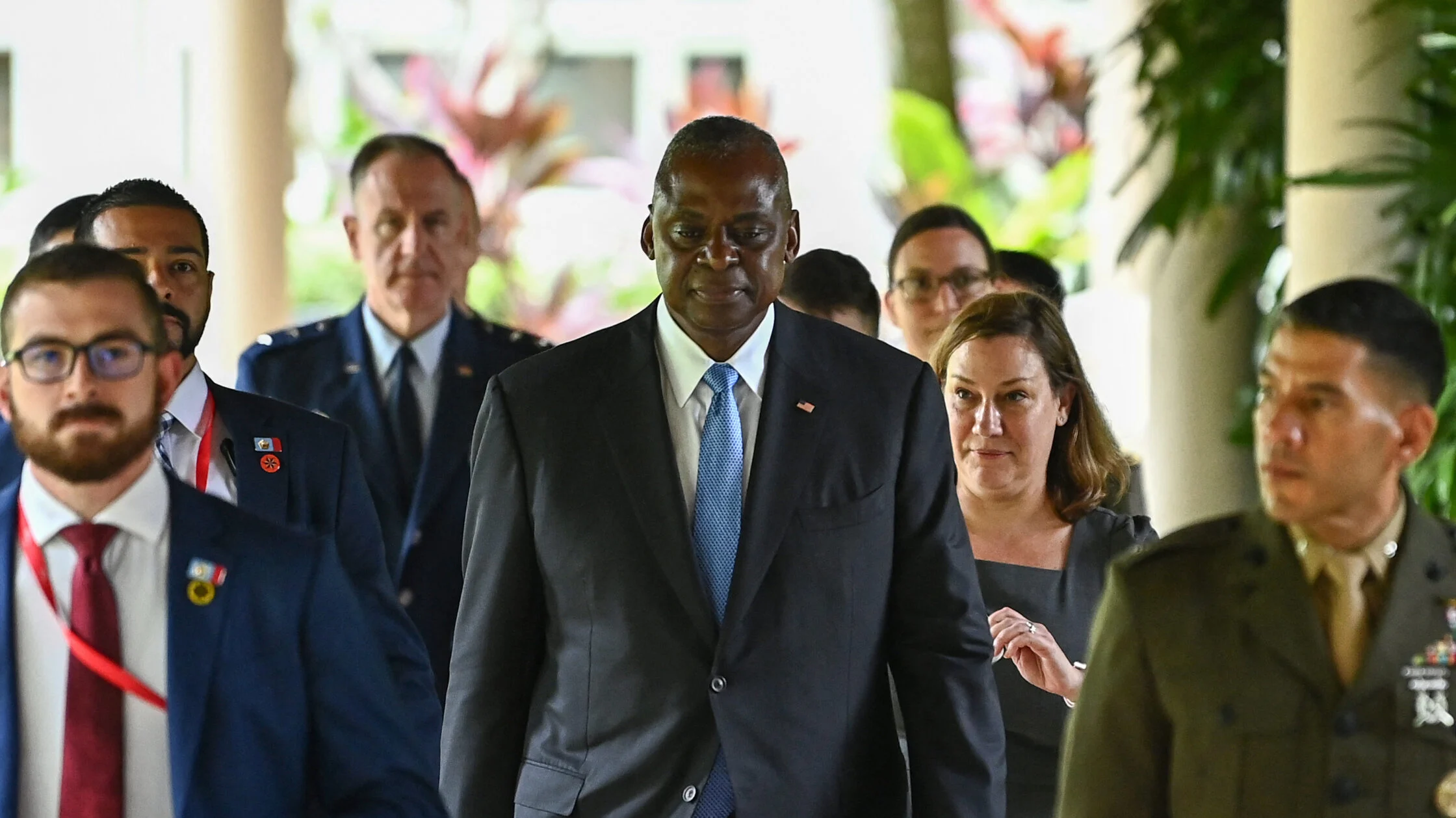
Key Points:
- US and Chinese defense chiefs met for the first time in months, signaling a potential thaw in strained relations.
- While both sides agreed on the importance of open dialogue, disagreements over Taiwan and the South China Sea dominated the meeting.
- Concerns were raised about China’s role in the Ukraine war, with the US expressing concern about Beijing’s support for Russia’s defense industry.
US-China Defense Chiefs Seek Common Ground
In a high-stakes meeting marked by cautious diplomacy and firm stances, US Secretary of Defense Lloyd Austin and Chinese Defense Minister General Li Shangfu convened in Singapore on Friday. The meeting on the sidelines of the annual Shangri-La Dialogue marked the first face-to-face interaction between the two defense leaders since Li’s appointment in December.
Dialogue Resumes After Months of Silence
The convening of the defense ministers from the United States and China signifies a possible de-escalation in bilateral tensions. This meeting represents a resumption of military communication channels, which the Chinese government unilaterally closed in August 2022. This closure was a direct response to the visit of then-House Speaker Nancy Pelosi to Taiwan, an action perceived by Beijing as undermining the One-China principle.
While indicative of a willingness to re-engage in dialogue, the meeting did not result in a complete resolution of existing friction points. Both parties affirmed the value of a predictable and stable military-to-military relationship. However, the dialogue also included a discussion of contentious geopolitical issues, most notably the status of Taiwan and maritime disputes within the South China Sea. These disagreements underscore the complex and multifaceted nature of the US-China relationship, where areas of cooperation coexist with significant points of strategic divergence.
Taiwan Remains a Point of Contention
General Li, echoing China’s longstanding position, reiterated that Taiwan remains part of China. He accused the US of sending “wrong signals” to pro-independence forces within Taiwan. He specifically pointed to the US State Department’s congratulatory message to Taiwanese President Tsai Ing-wen following her inauguration in May.
South China Sea: Freedom of Navigation vs. Regional Security
The South China Sea, a flashpoint for territorial disputes between China and several Southeast Asian nations, was featured prominently in the discussions. Austin reiterated the US commitment to freedom of navigation in international waters. At the same time, General Li stressed the importance of regional security, stating that “no one country can pursue security at the expense of sacrificing another country’s security.”
Adding to the geopolitical complexity, Philippine President Ferdinand Marcos Jr., a vocal critic of China’s activities in the disputed waters, is also attending the Shangri-La Dialogue and is expected to address the issue during his keynote address.
Ukraine War Raises Concerns Over China’s Role
The ongoing war in Ukraine cast a long shadow over the meeting. Secretary Austin voiced concerns about China’s reported support for Russia’s defense industrial base. At the same time, General Li maintained that Beijing remains committed to not providing arms to either side of the conflict.
A Step Towards Stability or Heightened Tensions?
Despite the lingering disagreements, both sides agreed to continue engaging in dialogue and pursuing future exchanges. However, experts caution that the road to stable US-China relations remains fraught with challenges.
The outcome of the Austin-Li meeting will likely set the tone for future interactions between the two superpowers, with implications for regional stability and the global balance of power.
